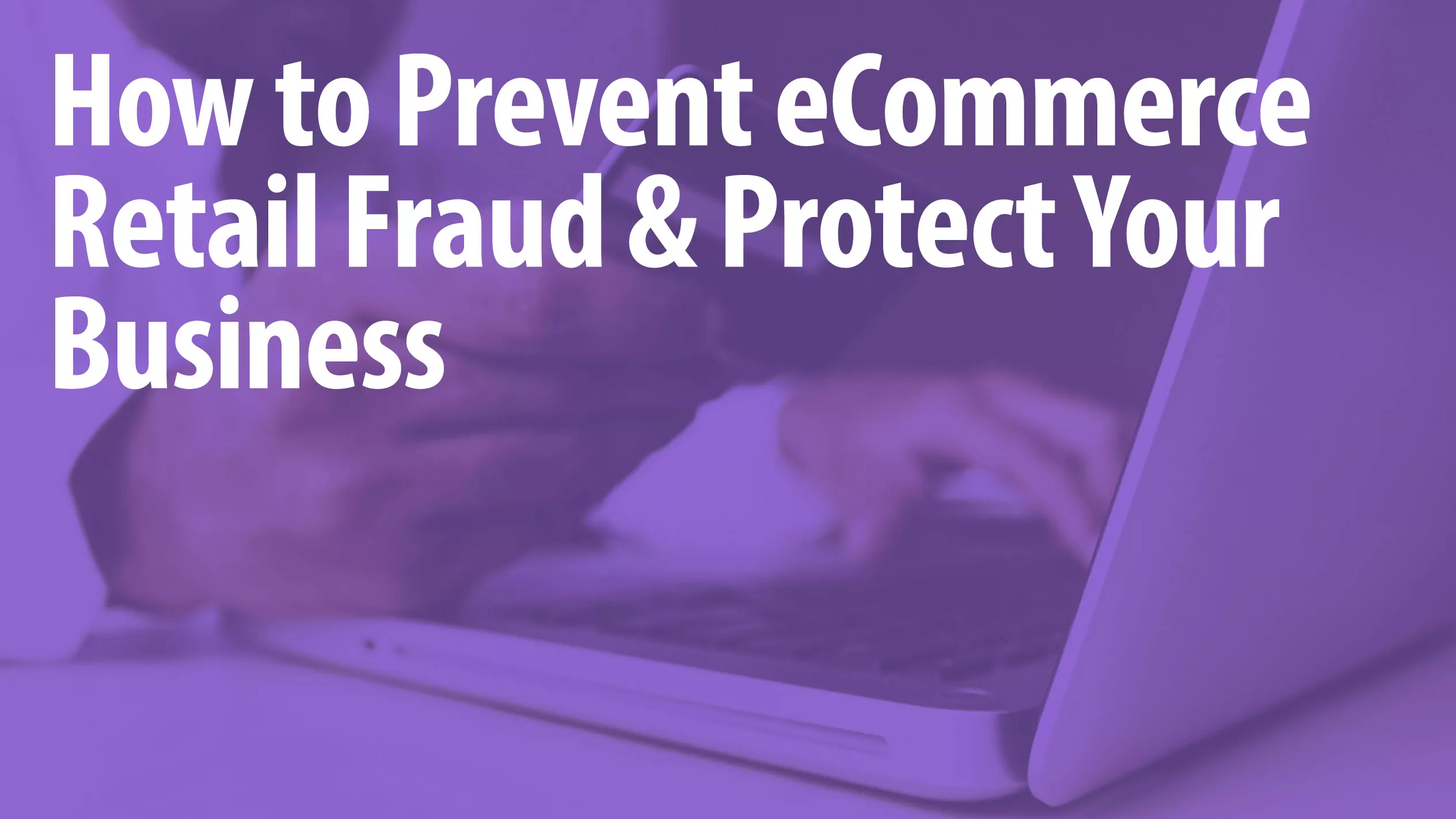
TABLE OF CONTENTS
There has been a surge in online shopping since eCommerce merchants have become more common in everyday life. And while online payment processing is essential to accessible shopping, online and anonymous shopping capabilities have also caused a spike in eCommerce fraud. Also called online retail fraud, eCommerce fraud occurs when online purchases are made through fraudulent means. This is a potential problem for eCommerce businesses, whether your business is exclusively online, or you operate from both a physical location and an online store. As a business owner, it’s crucial to learn to prevent eCommerce fraud and protect your business.
Common Examples of eCommerce Fraud
It’s important to understand what exactly constitutes ecommerce fraud in order to prevent it. Being able to identify fraudulent practices will make it much easier to protect your business against them. Common forms of ecommerce fraud can look like:
1. eCommerce chargebacks
Chargebacks can be highly detrimental to low risk and high-risk businesses alike. Chargeback fraud is when a customer disputes a charge through their bank that they made at your business under the guise of never having received the product or service they purchased. It is hard to track and even harder to stop, but it is one of the most detrimental forms of fraud. However, for most online retailers it is possible to get chargeback protection as a part of their eCommerce merchant account.
2. Shipping fraud
This occurs when fraudsters manipulate customer addresses, ultimately sending the customer’s order to the fraudster’s desired location. Large businesses often play an unknowing part in this type of fraud. This is because packages can be more easily diverted from a large public setting compared to a residential dwelling.
3. Account hacking
This usually happens in two ways:
- On the consumer front, if a customer has a long-standing account that becomes compromised by criminals, large purchases can look less suspicious to the business if the customer doesn’t report it. This poses bigger problems to honest consumers. One compromised account can often cause a trickle-down effect to several accounts if that customer reuses passwords across multiple sites.
- On the business front, fraudulent customers can create accounts, then sit on them for a period of time before they make fraudulent purchases, again raising fewer red flags than new accounts that make large purchases.
4. EMV-Driven fraud
EMV stands for Europay, Mastercard, and Visa, and it is the acronym for the microchip found on a wide range of debit and credit cards today. The EMV liability shift, which went into effect in October of 2015, aims to prevent eCommerce counterfeit credit card fraud with identity verification measures — like your pin number. But many eCommerce payment platforms don’t require EMV microchip verification, so it is possible and may be easier to commit identity theft.
Why Is eCommerce Fraud On the Rise?
eCommerce fraud has been on the rise over the last several years. Online shopping has been growing in popularity for decades, thanks to sites like Amazon and iTunes, and as this industry grows, so does the opportunity for fraudsters to take advantage of the system. Further, eCommerce is global, removing the requirement for face-to-face interaction. Anyone, from anywhere in the world, has the opportunity to commit online retail fraud.
eCommerce Fraud Prevention Tips
Virtually every business will encounter fraud attempts in some way or another. No matter what niche you operate in, it’s paramount for all business owners to do what they can to protect their eCommerce business and their customer’s shopping security.
 Prioritize fraud prevention
Prioritize fraud prevention
Education and awareness are the first steps to protect your business and your customers. It’s easy for fraud to go unnoticed if you aren’t concerned with finding it, or don’t know what to look for. Instituting fraud prevention solutions is the first step toward prioritizing protection in your eCommerce store.
Monitor your accounts
Keep a close eye on all of your business accounts for any strange activity. Regularly look at your bank accounts, online profiles, and keep tabs on your business credit score so that you’re immediately aware of suspicious activity. Detection is the first step to prevention.
Set volume limits
Consider setting limits on the volume of purchases each day. This may be by targeting accounts that make multiple purchases at a time or spend a much higher amount of money in a single purchase. It may sound counter-intuitive (after all, you don’t want to discourage customers from shopping), but it will reduce fraud. If criminals aren’t able to exploit your business to their fullest desire they’ll move on.
Impose stronger security requirements
Make your site more secure for both you and your customers. Require customers to refresh their passwords after a certain amount of time, request the CVV on the back of their credit card to make a purchase, and verify their billing address before they buy something. Strengthening your security requirements can be a fine line because you want to hinder criminals, not customers. However, implementing just a few extra security measures can deter criminals while still allowing customers to enjoy your business.
eCommerce fraud is a rising concern in the digital age. But there are several measures you can take to protect yourself, your business, and your customers. This way you make it easy, accessible, and more secure for your customer’s shopping experience.





 Prioritize fraud prevention
Prioritize fraud prevention
